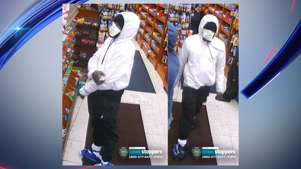
So, how are we doing?
Is Team LGBT(etc.) still making inroads in sports, at both the amateur and professional levels, or has momentum stalled like a 1970s Gremlin on a steep hill?
Well, that depends on which measuring stick we use.
Take a look around and you’ll notice that LGBT(etc.) athletes are as plentiful as sunshine in southern Arizona, and the Olympic Games perhaps serve as the best indicator of the push forward for Team Rainbow.
The numbers tell us that the Games stand as our largest global gatherings, and it doesn’t matter if the Jocks and Jills are frolicking on ice and snow or in the highest heat. If there’s a five-ring circus in town (any town), they will come to play. And where do LGBT(etc.) athletes fit in?
Summer Olympics
2012 London: 23
2016 Rio: 56
2020 Tokyo: 185
Winter Olympics
2014 Sochi: 7
2018: Pyonchang: 15
2022 Beijing: 36
We don’t need an Einstein, or even a reasonable facsimile, to do the math—the LGBT(etc.) constituency is sprouting like spring blossoms.
Granted, they take up a small portion of the athletes’ village at any Games (the head count at the 2020 Tokyo Summer Olympics was 11,656 participants; 2,871 joined the fun at the 2022 Beijing Winter Olympics), but it’s encouraging to know that the closet is becoming less crowded.
And, make no mistake, the athletes who performed under the Rainbow banner weren’t there as observers. They returned home with trinkets. At Tokyo, the LTBT(etc.) medal haul was 11 gold, 12 silver and nine bronze. On the (fake) snow and ice in Beijing, it was four gold, two silver, three bronze.
It’s like Megan Rapinoe said scant seconds after she and the Yankee Doodle Damsels had won soccer’s World Cup in 2019: “Go gays. You can’t win a championship without gays on your team.”
That certainly was true for Rapinoe and the American women in France (six players and the coach were gay), and it also rang true for the Canadian soccer and shinny sides in Tokyo and Beijing, two gold-medal-winning outfits that featured five LGBT(etc.) players plus the coach, Bev Priestman, and seven LGBT(etc.) players, respectively.
A lesbian, Brianne Jenner, was the leading goal-scorer and MVP in the Beijing hockey tournament, while another lesbian, Vivianne Miedema of The Netherlands, set an Olympic record of 10 goals in the fitba frolic.
Away from the five-ring circus, 25 per cent of the players in last year’s WNBA playoffs were LGBT(etc.); there are gay athletes in the Premier Hockey Federation and the Professional Women’s Hockey Players Association; they compete in the NWSL and on the WTA tour and in the LPGA. Transgender swimmer Lia Thomas made waves in and out of NCAA swimming pools.
Notice a theme there? That’s right. All those glad tidings are from the female portion of the playground. Same as it ever was.
There is no openly gay man on an NFL roster today.
There is no openly gay man on an NBA roster today.
There is no openly gay man on a MLB roster today.
There is no openly gay man on an NHL roster. Today or any other day.
There is no openly gay man on a MLS roster today.
There is no openly gay man on the PGA Tour today.
There is no openly gay man on the ATP Tour today.
Yet we know there are gay men playing in those leagues. We just don’t know their identities, because they hesitate to come out of the closet until the applause and the six-, seven- and eight-figure paydays have dried up.
Oh, sure, there have been glimmers of hope: Jason Collins, Robbie Rogers, Collin Martin and, most recently, Carl Nassib, who, in 2021, became the first openly gay man to perform in the National Football League. Alas, it appears to be a case of one-and-done. The Las Vegas Raiders released Nassib earlier this year, and it’s fair to wonder why the big defensive end has been sitting by the phone since he was cast adrift in March. Please don’t tell us he would be a distraction.
Michael Sam was a distraction. He was too busy paling around with Oprah and dancing with stars to get down and dirty on the football field, so he never played a down in a regular-season NFL game. He took his sideshow to the Montreal Alouettes and was on the field for 12 plays in one Canadian Football League skirmish, then fled the game. (He’s back now, joining the Barcelona Dragons roster in the European League of Football.)
There was no such nonsense with Nassib. He got into 13 games last season, recording 21 tackles, 1.5 sacks and a forced fumble in helping the Raiders qualify for the playoffs for the first time in five years.
But, as the song goes, his phone still ain’t ringing.
Perhaps Luke Prokop is destined to become the next gay male pioneer, and it would be in the National Hockey League, an enterprise that has featured the grand sum of zero openly gay men. Repeat after me: Zero. Seriously, more women have played in the NHL than openly gay men. Chew on that.
At present, Prokop is a chattel of the Nashville Predators, who plucked him from the pool of freshly scrubbed teenage talent in summer 2020 and got his signature on a three-year, entry-level contract that December. The strapping defenceman came out seven months later, and these days he’s doing his very best to get his Edmonton Oil Kings into the Memorial Cup tournament later this month in Saint John, New Brunswick.
Given that he’s just been anointed Humanitarian of the Year in the Western Hockey League, Big Luke is an ideal ambassador for the LGBT(etc.) collective, but a bigger stage would make more people sit up and take notice.
The thing is, graduating to the NHL is an iffy bit of business for any third-round draft choice.
In sports on the periphery, men have been up for the challenge of poking holes in antiquated notions about sexual orientation (see: curling’s John Epping; fancy skating’s Eric Radford and Jason Brown; skiing’s Gus Kenworthy; swimming’s Markus Thormeyer; boxing’s Orlando Cruz, etc.), and scarcely an eyebrow was raised when they came out. It’s dog-bites-man stuff. Nothing to see there.
Not so if it’s a football, baseball, basketball, soccer or hockey player at the elite level. That’s front page news. Plenty of film at 11. It might even land the guy an audience with Oprah.
Coming out isn’t easy. The fear factor is real. It takes balls, and please pardon the pun. And each gay male athlete is on his own timetable. He chooses when and where, if at all.
Still, a lot of us had hoped we wouldn’t be talking about this almost a quarter of a century into the 21st century, but this is where we’re at. For now, the cupboard remains bare and the closet remains crowded in major men’s North American sports leagues.
Meantime, elite female athletes are marrying one another and raising families. Good on them.








